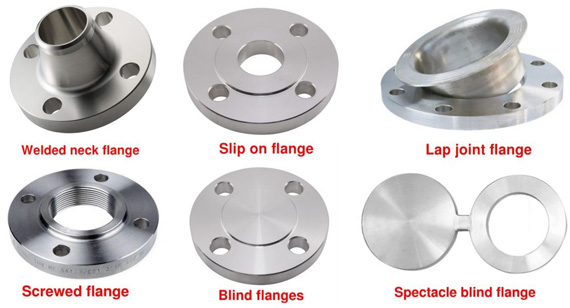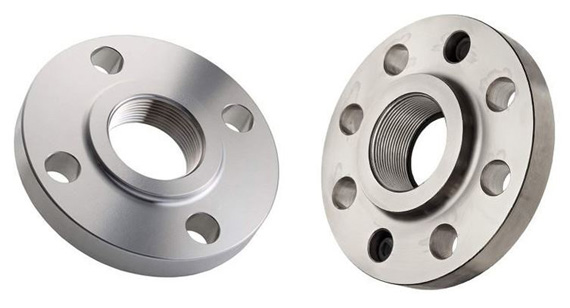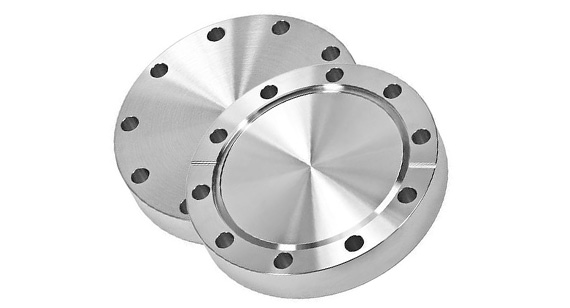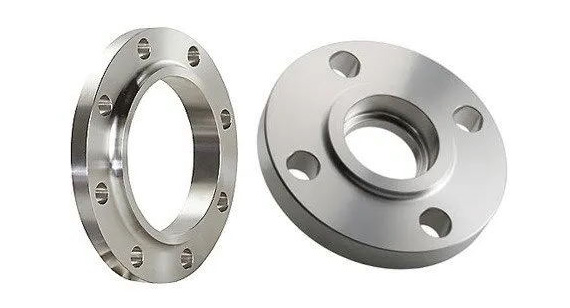15 years one-stop China custom CNC machining parts factory
 144 |
Published by VMT at Jun 05 2025 | Reading Time:About 4 minutes
144 |
Published by VMT at Jun 05 2025 | Reading Time:About 4 minutes
Imagine if machines kept breaking because of weak connections. Leaks and downtime would cause significant problems and lead to wasted resources. This is why pipe flanges are essential. They ensure pipes remain securely connected without leaks, enabling systems to function efficiently across various industries.
Pipe flanges offer more than just durability. They simplify the assembly and repair process, saving both time and money during maintenance. Studies show that pipe flanges facilitate quick disassembly and reassembly, reducing labor costs and enhancing worker safety. Whether you require standard or custom designs, CNC machining services from a reliable cnc machining factory like VMT deliver precise and trustworthy results.
Definition and Purpose
Pipe flanges are important parts of piping systems. They connect pipes, valves, pumps, or other equipment securely. This helps prevent leaks and keeps systems working properly. Industries like oil and gas, water treatment, and power generation use them for safety and efficiency.
The demand for pipe flanges is increasing. In 2023, the global market was worth about $4,923.63 million. Since 2018, it has grown at a rate of 3.52% per year. By 2028, it is expected to reach $6,682.67 million. This shows how important they are in industrial work.
Characteristics of Flanges
Pipe flanges have special features that make them useful. Here are some key traits:
These features make flanges dependable for tough jobs in piping systems.
Flange connections join pipes or attach pipes to equipment. Here's how it works:
This simple method keeps systems safe and working well, even under tough conditions.
Tip: Check flange connections often to avoid leaks and ensure they last longer.
Components of Pipe Flanges
A pipe flange might look simple, but it has many parts. These parts work together to make strong and safe connections. Each piece has a job to help the flange handle different conditions.
Here are the main parts of a pipe flange:
Note: Check these parts often to keep the flange working well and avoid problems.
Knowing these parts helps you pick the right flange for your system. It also makes fixing and maintaining them easier.
Importance in Industrial Systems
Pipe flanges are more than connectors; they are key to industrial systems. Without them, keeping pipes secure would be very hard. They make connections strong, flexible, and long-lasting.
In industries like oil and gas, pipe flanges handle fluids and gases under high pressure. They stop leaks even in tough conditions. In water plants, they make pipe assembly and repair faster. Power plants use flanges to link turbines, boilers, and other equipment.
Flanges also cut downtime during repairs. You can disconnect them easily without cutting or welding. This saves time and keeps work moving. CNC machining ensures flanges are made to exact sizes, making them reliable and effective.
Tip: Pick flanges made from materials that match your system's needs. For example, stainless steel resists rust in marine areas, while carbon steel works well in hot systems.
By learning about pipe flanges, you see how they keep systems safe, efficient, and lasting longer.
Pipe flanges come in different types for various industrial uses. Picking the right one helps your system work safely and efficiently. Below are three common types: weld neck, slip-on, and threaded flanges.

Weld Neck Flanges
Weld neck flanges are strong and very reliable. They have a long, tapered hub that adds strength to high-pressure systems. These flanges are used in industries like oil and gas, chemical plants, and power stations where safety is crucial.
Their design reduces stress at the flange's base. This makes them great for extreme heat or pressure. Weld neck flanges are expected to grow in demand. In 2023, they held 34% of the market. By 2037, this may rise to 62% due to more pipelines in chemical production.
Tip: Use weld neck flanges for high-pressure systems to ensure safety and durability.
Slip-On Flanges
Slip-on flanges are easy to install and cost less. Unlike weld neck flanges, they slide over the pipe and are welded. This simple design makes them perfect for low-pressure systems needing quick assembly.
They are used in industries like water treatment and construction. Their low cost and easy setup make them ideal for tight budgets. Because of this, their popularity is growing in cost-focused industries.
Note: Slip-on flanges are not ideal for high-pressure systems. Always check your system's needs before choosing.
Threaded Flanges
Threaded flanges, also called screwed flanges, don’t need welding. They connect to pipes using threads, making them useful where welding is unsafe or not possible. They are often used with flammable materials or in areas without welding tools.
Made from materials like stainless steel or carbon steel, they resist rust and last long. Threaded flanges work best in low-pressure systems, such as plumbing or small industrial setups.
Tip: Pick threaded flanges for systems needing easy setup and no welding.

Lap Joint Flanges
Do you need a flange that's easy to install? Lap joint flanges could be the answer. These flanges work with a stub end, making assembly simple and quick. They are great for systems that need frequent disconnections.
Lap joint flanges are perfect when alignment is important. They slide over the pipe and rest on the stub end. This lets the flange rotate freely, making bolt alignment easier. They are often used in tight spaces or where aligning bolt holes is tricky. Industries like chemical plants, water systems, and food factories use them often.
Key Features of Lap Joint Flanges:
Tip: Choose lap joint flanges for systems needing regular maintenance. They save time and reduce wear on pipes.
Lap joint flanges are a smart choice for flexible and durable systems. Their design makes installation easier and more reliable.
Blind Flanges
Need to block a pipe or stop flow for repairs? Blind flanges are the best option. These flanges have no center hole, making them ideal for sealing pipe ends or isolating parts of a system.
Blind flanges are used in industries like oil, power, and chemicals. They handle high pressure and heat, ensuring safety and reliability. They are also used in testing to check if a system is leak-free.
Advantages of Blind Flanges:
Note: Pick blind flanges made from materials that suit your system's needs.
Blind flanges are essential for securely closing pipes. Their strength and flexibility make them a trusted choice in many industries.

Socket Weld Flanges
Need a strong connection for small pipes? Socket weld flanges are made for this. They have a recessed area where the pipe fits and is welded, creating a tight and secure joint.
These flanges are used in high-pressure systems like hydraulic lines and steam pipes. Their small size makes them perfect for tight spaces. Industries like power plants, chemical factories, and marine systems rely on them.
Benefits of Socket Weld Flanges:
Tip: Use socket weld flanges for small pipes in high-pressure systems.
Socket weld flanges are tough and reliable for demanding jobs. Their design ensures safety and works well in limited spaces.

Specialty Flanges
Do you find it hard to pick the right flange for special jobs? Specialty flanges make it easier by offering custom solutions. They are made to fit unique systems, ensuring safety and efficiency.
Specialty flanges are specially designed parts for tough tasks. They work where regular flanges fail. Industries like aerospace, nuclear power, and high-heat systems use them. These flanges handle extreme pressure, corrosion, and precise alignment needs.
What Makes Specialty Flanges Unique?
Specialty flanges are unique because they meet specific system needs. They are made with advanced CNC machining for accuracy and strength. Their designs include better seals, stronger builds, and non-standard pipe compatibility.
Types of Specialty Flanges
Specialty flanges come in different types, each with a purpose. Here are some examples:
Orifice Flanges
Orifice flanges measure fluid flow in pipes. They hold plates that track flow rates. These are vital in industries like oil and gas for accurate data.
Expander Flanges
Expander flanges make pipes wider. They help connect pipes of different sizes smoothly.
Reducing Flanges
Reducing flanges join pipes of different sizes without extra parts. They save space and are simple to install.
Spectacle Blind Flanges
Spectacle blind flanges block parts of a pipe for repairs or tests. They have a solid plate and a ring plate joined by a hinge.
High-Pressure Flanges
High-pressure flanges are built for systems with very high pressure. They are strong and stop leaks under stress.
Why Choose Specialty Flanges?
Specialty flanges are flexible and dependable. They are made with CNC machining for perfect size and top performance. Factories like VMT create custom CNC flange parts for exact needs. These flanges are best for unique designs or extreme conditions.
Tip: When picking specialty flanges, think about pressure, heat, and pipe fit. Ask CNC machining experts for help with custom designs.
Pipe flange connections keep piping systems safe and secure. Without good connections, leaks and failures can happen. This can lead to expensive repairs and safety problems. Knowing how flange connections work helps keep systems strong and reliable.
Flange Facing Types
Flange facing types decide how flanges connect and seal. Picking the right type stops leaks and adds strength. Common flange facing types include:
Each type has a specific use, so match it to your system's needs.
Tip: Check flange faces often for damage to keep connections secure.
Gaskets and Bolting
Gaskets and bolts are key parts of flange connections. Gaskets seal between flanges, while bolts hold them together. Choosing the right materials and installing them correctly prevents leaks.
Gasket Types:
Bolting Tips:
Note: Top manufacturers test gaskets and bolts for quality and safety.
Strong flange connections need careful planning. Follow these steps to avoid leaks and keep systems safe:
Following these tips ensures your flange connections stay strong and reliable.
Reminder: Work with trusted CNC machining factories like VMT for precise flange parts that fit perfectly.
Petrochemical Industry
The petrochemical industry has tough conditions for pipes. High pressure, strong chemicals, and changing temperatures need strong connections. Pipe flanges are vital for safety and smooth operations. Without them, leaks could cause spills, delays, and harm to the environment.
Pipe flanges stop leaks of high-pressure or harmful materials. They spread out pressure and heat evenly, avoiding pipe damage or breaks. Strong flanges with gaskets like rubber or metal create tight seals, even in tough conditions. Regular checks and correct setup improve their performance, keeping systems safe and steady.
Tip: Pick flanges made from stainless steel or alloys to resist chemicals and heat.
Power Generation
Power plants need strong pipes for steam, water, and fluids. Pipe flanges keep these connections secure under high pressure and heat. They stop leaks, handle stress, and protect the system.
In nuclear plants, flanges face extreme conditions. Special tests check their strength and sealing ability. This ensures they can handle stress and temperature changes. Properly installed flanges prevent damage, making systems last longer and work better. Their role is key to safe and efficient power generation.
Note: Inspect and maintain flanges often to avoid wear and keep them working well.
Marine Industry
Marine environments are hard on pipes. Saltwater, humidity, and movement need tough, rust-proof parts. Pipe flanges meet these needs, keeping fluids safe on ships and platforms.
The global flange market grows with water projects. For example, in 2023, $192 billion was spent on water systems. This shows the need for reliable marine piping. Flanges made from stainless steel or rust-proof materials last long in these conditions.
Tip: Use flanges with anti-rust coatings or marine-grade materials for saltwater use.
Water and Wastewater Treatment
Pipes in water systems deal with moisture, chemicals, and pressure daily. If connections fail, leaks or contamination can cause big problems. Reliable solutions are needed to keep things working well.
Pipe flanges are very important in water treatment plants. They securely join pipes, pumps, and valves, helping water and waste move safely. Their design makes taking them apart easy, so repairs and maintenance are quicker and cheaper. Strong materials like stainless steel or rust-proof alloys are often used to handle tough conditions.
Pro Tip: Use flanges with anti-rust coatings to make them last longer.
Pipe flanges are flexible and essential for this work. They link pipes of different sizes, manage high-pressure flows, and resist chemical damage. Checking them often and installing them correctly keeps them working well.
Picking the right pipe flanges improves your system’s safety and efficiency. This reduces downtime and helps meet environmental rules.
Materials Used in Flange Production
Picking the right material is very important for making pipe flanges. The material affects how well the flange works in different conditions. For example, stainless steel is strong and resists rust. It is great for high-pressure systems or places with chemicals. Carbon steel is stronger and cheaper but needs coatings to stop rust in tough environments.
Other materials like alloys, copper, and plastic are also used. Each has special features for certain jobs. For instance, copper is common in plumbing because it conducts heat well. Plastic is light and resists chemicals, making it good for low-pressure systems.
Flanges must follow strict rules to be safe and fit well. Groups like ASME/ANSI and DIN make these rules. They decide how flanges are designed, sized, and tested. Following these rules ensures flanges work properly in piping systems.
For example, ASME B16.5 is for flanges in high-pressure systems. DIN standards are often used in Europe. These rules help you pick the right flange. If you need a weld neck flange for high pressure or a slip-on flange for easy setup, standards guide your choice.
Flanges have markings and sizes that give useful details. These include size, pressure rating, and material type. For example, "ANSI 150" means it follows ANSI rules and handles 150 psi pressure.
Important sizes include outer diameter, bolt circle, and thickness. Correct sizes ensure the flange fits well and stops leaks. CNC machining helps make flanges with exact sizes. Factories like
VMT use advanced tools to create reliable and precise flanges.
Reminder: Check markings and sizes before installing to avoid mistakes or leaks.
Ever wonder how pipe flanges stay strong and precise? It's because of advanced production methods and strict quality checks. These steps make sure flanges work well in tough systems with high pressure and heat. Knowing these processes helps you pick reliable flange CNC machining parts for your needs.
How Are Pipe Flanges Made?
Making pipe flanges involves careful steps to ensure strength and accuracy. Here's a simple overview:
Tip: Check if your supplier uses advanced CNC machining for accurate and strong flanges.
Why Is Quality Control Important?
Quality control makes sure flanges meet standards and work reliably. Factories check for flaws, measure sizes, and test pressure strength. Tests like hydrostatic and ultrasonic inspections confirm the flange can handle tough conditions.
What Should You Look For?
Choose flanges from trusted CNC machining factories like VMT. Look for certifications like ISO 9001 to ensure high standards. Reliable makers also mark flanges with details like material type and pressure rating.
Reminder: High-quality flange CNC machining parts keep systems safe, efficient, and lasting longer.
By learning about production and quality checks, you can trust your pipe flanges to perform well.
Pipe flanges are very important in industrial systems. They keep pipes connected tightly to stop leaks and work smoothly. Knowing their types, how they connect, and where they are used helps you choose the right ones. Learning how they are made also helps you pick strong and long-lasting options. Pipe flanges are flexible and useful, making them a key part of modern engineering. Whether in oil plants or water systems, they improve safety and make operations more reliable.
What materials are ideal for making flanges?
Do you know what materials make strong flanges? Picking the right material helps them last longer and work well. Many flanges are made from stainless steel, carbon steel, or alloys. Stainless steel doesn’t rust and works in wet or chemical-filled places. Carbon steel is strong and cheaper, great for high-pressure systems. Alloys like nickel or titanium handle heat and stop corrosion.
For low-pressure systems, plastic flanges are light and affordable. Copper is another option, especially in plumbing, because it conducts heat well. Always choose a material that matches your system’s pressure, temperature, and environment. This keeps your flanges working safely and reliably.
Tip: Ask CNC machining experts like VMT for help picking materials. They can make custom flanges to fit your needs.
What are the specifications of flanges?
Flanges have specific sizes and rules to keep systems safe. Important details include size, pressure rating, and material type. For example, a flange marked "ANSI 150" follows ANSI rules and handles 150 psi. Key sizes include the outer edge, bolt circle, and thickness. These ensure the flange fits well and stops leaks.
Standards like ASME B16.5 or DIN guide how flanges are made and tested. These rules make sure flanges are strong and work properly. CNC machining helps create exact sizes. Factories like VMT use advanced tools to make precise and dependable flanges.
Reminder: Check the flange's size and rules before installing to avoid problems.
When is it best to use a flange fitting?
Flange fittings are great for strong, leak-proof pipe connections. They work well in high-pressure or hot places like oil plants or power stations. Flanges also make repairs easier. You can take them apart and put them back without cutting pipes. This is helpful for systems needing regular checks or fixes.
In water plants or marine systems, flanges resist rust and handle tough conditions. Special flanges, made with CNC machining, fit unique needs. Whether you need a tight seal or quick setup, flanges are a reliable choice.
Pro Tip: Use flanges where safety, strength, and easy maintenance are important.
What are the three types of flanges?
Not sure which flange type is best for your system? Picking the right one can seem tricky with so many choices. But learning about the three main types makes it easier and helps your system work well.
The three main flange types are weld neck flanges, slip-on flanges, and blind flanges. Each has a unique job and fits different needs:
Quick Tip: Choose a flange that matches your system's pressure and temperature for the best results.
Knowing these three types helps you pick the right one. Use weld neck flanges for strength, slip-on flanges for easy setups, and blind flanges to seal pipes.
Want to know how flanges compare to other connectors? Keep reading to find out more!
Is a flange a fastener?
Think about connecting pipes without a proper method. It could lead to leaks, system issues, or safety risks. This is why flanges are so important. Some people ask if flanges are fasteners. Knowing their role helps you pick the right parts for your system.
A flange is not a fastener. It connects pipes, valves, or equipment. Fasteners like bolts and nuts hold the flange tightly in place. Together, they create a strong, leak-proof connection.
The flange acts as the base, while fasteners secure everything. This teamwork ensures safety and strength in industrial systems.
Quick Fact: Flanges need bolts and gaskets to make secure connections.
Flanges and fasteners have different jobs. Fasteners are small and tighten parts together. Flanges are larger and spread pressure evenly. This makes them perfect for high-pressure systems like oil pipelines. CNC machining ensures flanges are made with exact sizes for tough jobs.
Why do flanges need fasteners? Bolts press the gasket between flange faces. This stops leaks and keeps the system steady. CNC machining factories like VMT make flanges with precise bolt holes and smooth surfaces. These details make installation easier and improve performance.
Tip: Use strong, high-quality fasteners with your flanges for better results.
Knowing how flanges and fasteners work together helps you choose wisely. Flanges provide the structure, and fasteners complete the connection. Together, they keep systems safe and reliable.
What does a pipe flange do?
A pipe flange joins pipes, valves, or equipment tightly. It stops leaks and helps the system work well under heat or pressure. Flanges also make repairs easier since they can be taken apart and put back together quickly.
How can you pick the best flange for your system?
Think about the system's pressure, temperature, and surroundings. Use weld neck flanges for high-pressure systems. Slip-on flanges are good for low-pressure setups. Specialty flanges are made for special needs. Ask CNC machining experts like VMT for custom options.
Why is CNC machining important for making flanges?
CNC machining makes flanges with exact sizes. This improves how they work and keeps them safe. Factories like VMT use advanced machines to make strong and precise flange parts for industries.
Can flanges handle rust in tough places?
Yes, flanges made from stainless steel or alloys can fight rust. These materials are great for marine or chemical areas. Special coatings also help them last longer in harsh conditions.
Why is VMT a good choice for CNC machining flanges?
VMT makes high-quality flange parts with advanced tools. They focus on precision and dependability. They also offer custom services to fit your system’s needs, making them a reliable option.
